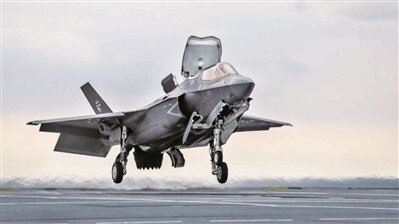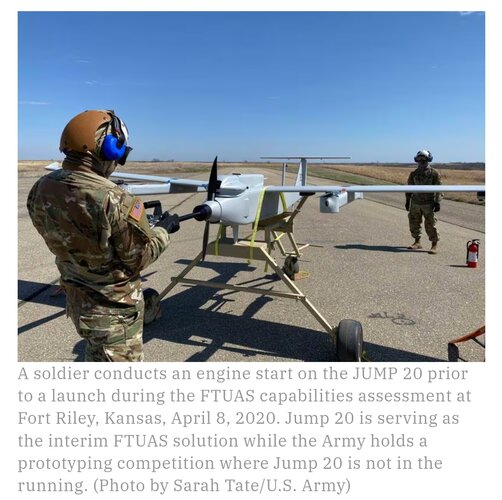The acquisition system is beyond dysfunctional. COTS is a joke. R D t E needs to return. throwing garbage over the transsume will lose the US a war. This garbage will not last 5 secs. It is not armed, has no dynamic maneuver or stealth.
These systems have lower total lifespan cost than the operating cost of a single sortie of 4.5/5gen aircraft. (easily $30,000 per hour) We are talking about ~40kg vehicle here, while a fighter starts at 11000kg and gets up to 38,000kg, a 1000x difference in weight and cost ($100mil to >$100k). The vehicle only need to survive half a sortie or soak up one high cost missile to pay for itself relative to using higher end aircraft.
In a mature air combat regime, combined arms is story here and the question isn't whether low end systems should exist, but the force balance. Low end forces are useful for economy of force, as high performance systems needs to be focused at the point of decision.
Even with low end forces, combined arms enable low end forces to operate against high end opponents. In air warfare one can see multiple layers of aircraft:
1. On the lowest end, multicopters for maximum agility for scouting out areas with top cover: forests and cities.
2. Above that, drones and cruise missiles flying nape of earth, below the radar horizon. This are some loiter munitions, ALE and likes. The low attitude means vulnerability to guns and DEW, however those direct fire weapons have limited coverage.
3. Above that, drones that fly under cloud cover for EOIR sensors against small (infantry scale, not vehicle scale) opponents. Such aircraft are so close to the ground as to be essentially impossible to hide and defend against radar SAM and has to be disposable.
4. Above that, drones that fly about cloud cover with electronic means of detection: ESM and Radar with actual missiles which will counter opponent radar SAM and air power. The MQ-Next will be the stealthy observer while loyal wingman will do the dynamic fighting.
5. Behind that, 5/6th gen fighter aircraft will conduct command and control, DEW and air superiority
6. Behind that, there'd be AEW battle management aircraft
Even a high end opponent will not have AD systems everywhere due to need to concentrate and attrition, and it may not be worth the risk of exposing AD to shoot at low value (spend $1mil active radar missile on a piston engined fiberglass thingy with RC model electronics?) target.
If there is a weapon system that'd fit in UAS of this scale, it is a blinding laser that'd defeat missiles and EOIR AA. Add a ESM overwatch aircraft with anti-radiation missiles and you can a fairly complete combat complex. Attempts at actually doing this will get cries of warcrimes more than anything though, so it is best to have the system build out in secret and only use it in a sufficiently big war.
---------------------------
Finally, the low end mission really need low end aircraft. There is still shooting war going on against opponents without complete and attrition resistant air defense, wasting high end aircraft airframe life to them is pointless. Just think, the MQ-9 saved the USAF from defeating itself from airframe exhaustion before high end shooting even starts.






